

Home
About Us
Allotments
Garden Equipment
Seed Suppliers
Manure Problems
Children's Pages
GLA Blog
Weather Blog
School Veg Patch
Useful Links
Toad
The large areas of water to the east of our site maybe account for the large numbers of amphibians found on our plot.
As with all amphibians toads need to visit water to breed. On the whole toads prefer to breed in large expanses of fairly deep water. Each season in early spring they return to the same breeding waters, where the female toad lays long strings of spawn comprising of about 2000 eggs. The eggs hatch into tadpoles which remain small and black. Toad tadpoles apparently do not taste as nice as frog tadpoles and so are less likely to be eaten by predators.
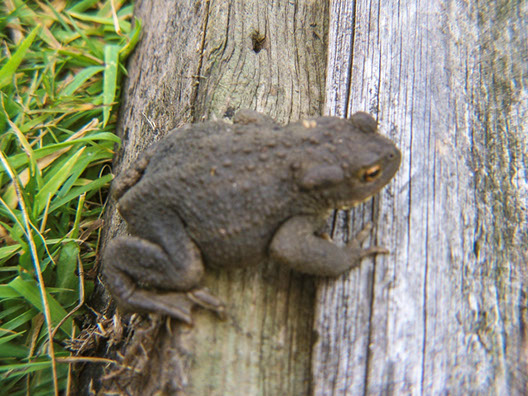
Toadlets leave the water in June or July and if they manage to survive their ‘childhood’ can live up to 10 years, although apparently one captive common toad was recorded to have lived for 40 years. Unfortunately very few toadlets reach adulthood
A male toad is about 8 cm long and the female somewhat larger.
A toad’s front feet have four toes which are not webbed and the hind feet have five partly webbed toes. They use their hind feet to dig out holes in which to hide. The unwebbed front toes help ensure that the male can grasp the female tightly during mating. As males tends to outnumber females it is important that once he has found his mate he hangs on to her as the competition is fierce.
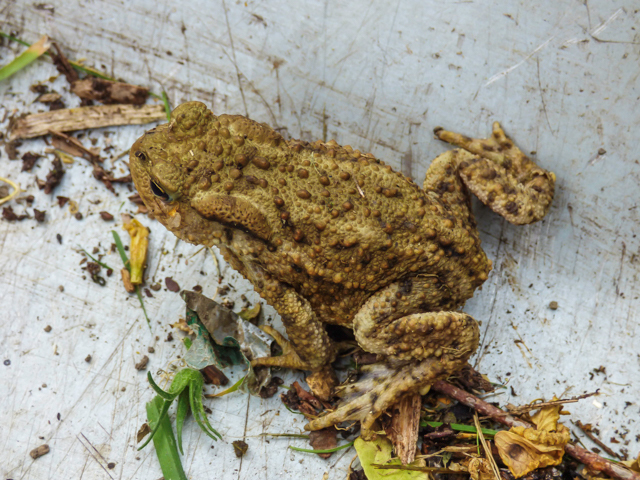
The common toad can be distinguished from the common frog by the warty appearance of its skin. A toad’s snout is more rounded than that of a frog and its hind legs are shorter. Although a toad can jump it is more often seen crawling slowly. The olive brown colour gives the toad a much greyer appearance than the frog. However, the colour does vary and very often a toad takes on the colour of the surrounding soil as a means of camouflage.
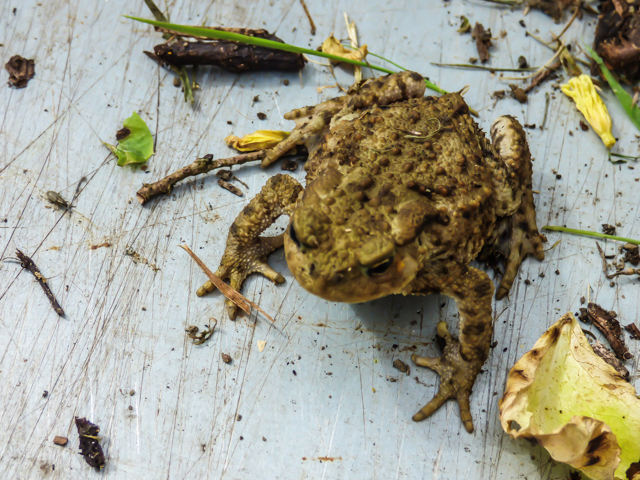
Predators are deterred from eating toads as its skin contains a poison that will burn the mouth of an animal trying to eat it. Apparently hedgehogs are one of the few predators that are immune to the poison. When a toad encounters a predator it will stand up on its tiptoes to try and make itself as large and intimidating as possible.
Other than during the breeding period toads are found well away from water. The common toad is regularly found in gardens. Preferring damp places, it often hides under logs and stones. Toads can, however, tolerate much drier conditions than can a frog. Once we bought a large bale of compressed compost and to our surprise found a toad squashed almost flat inside the bale. Incredibly the toad was alive and after being given a shower and a comfortable spot in the green house it soon recovered and went on its way.
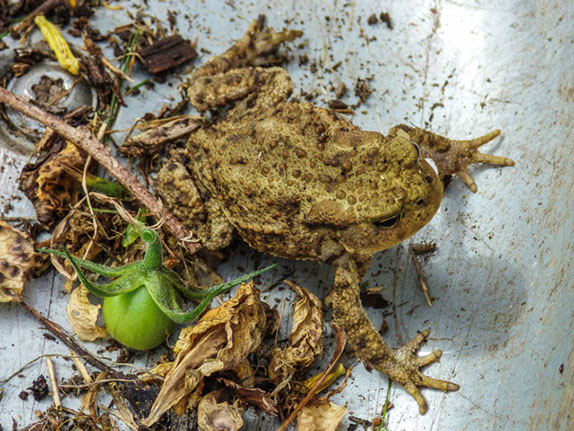
Mainly active at night the toad is gardeners’ ally feeding on a variety of insects and slugs. When hunting the toad either slowly crawls up on its prey or sits still waiting for unsuspecting prey to come close. It then shoots out its long sticky tongue to catch its meal. As the tongue is attached to the front of the toad’s mouth it is able to reach out further. Toads blink to enable them to swallow their food. The eye is pushed up against the roof of the mouth and forces food further back into the throat.
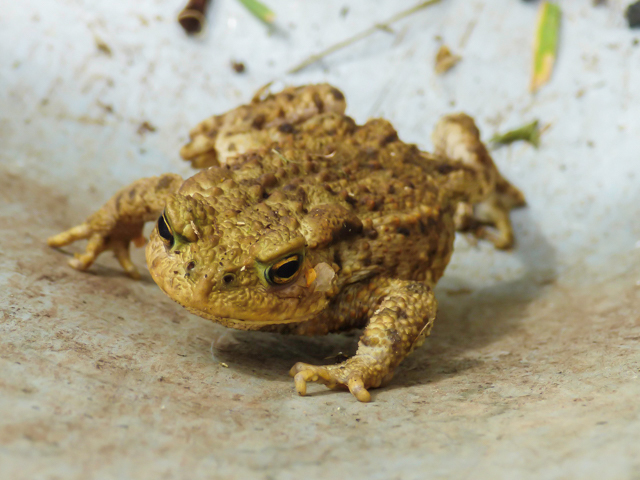
Toads hibernate from the middle of October to around March. No doubt the ones uncovered in our compost heap had settled in for winter. Let’s hope they found their new bedroom just as cosy!
Our Plot at Green Lane Allotments Blog | A Gardener's Weather Diary | School Vegetable Patch Website
© Our Plot on Green Lane Allotments - Please email me if you wish to use any of this site's content